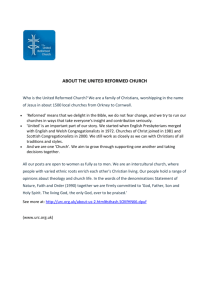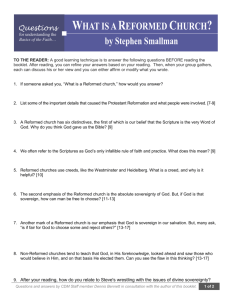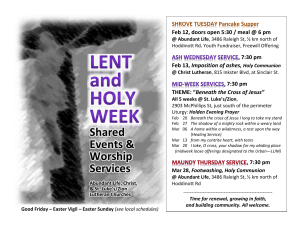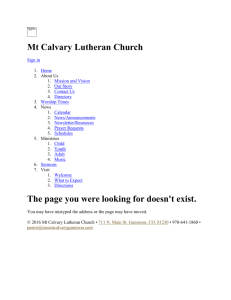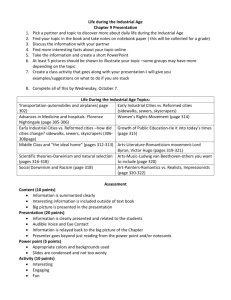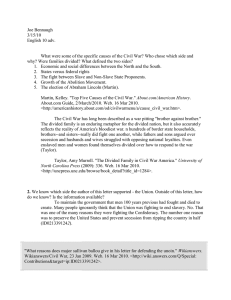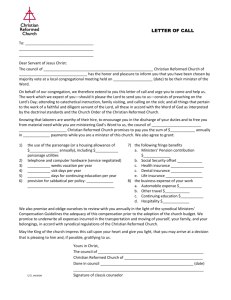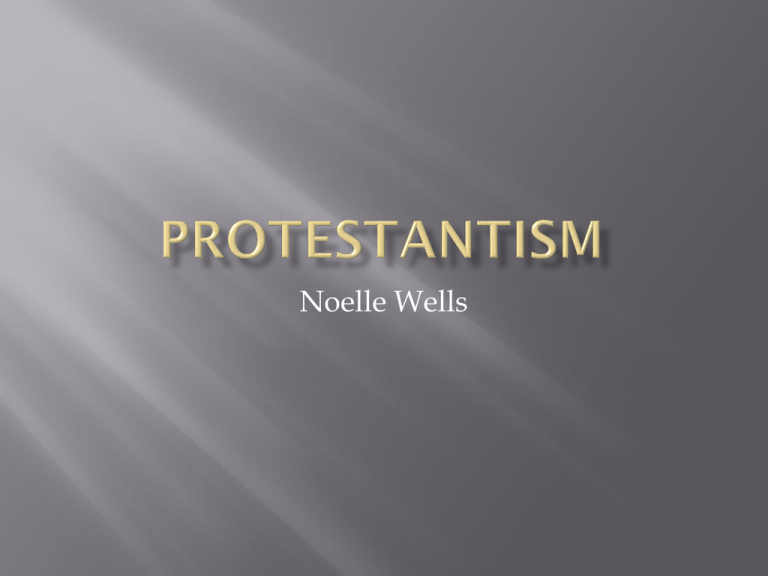
Noelle Wells
Protestantism began in the early 16th Century
with Martin Luther and the 95 Theses in 1517.
After this, new forms began rising in the late
1520’s
Protestantism formed as Luther and others
were dissatisfied with Catholic Church’s beliefs
and decided to break away.
Such beliefs were the selling of indulgences and
transubstantiation
The term “Protestant” was first used in 1529
after a German Prince protested the Diet of
Speyer.
There are hundreds of Protestant Denominations
today.
There are four groups Protestants can be classified as
Lutheran
Anglican/ Episcopal
Reformed
Sectarian or Separatist (Anabaptist)
Martin Luther- Lutheran
Formed early 1500’s
King Henry VIII- Anglican Church
Ulrich Zwingli- Swiss Reformation
This eventually led to the Anabaptist
This also resulted in the Amish, led by Jakob Amman.
John Calvin- Calvinism
This includes the Reformed and Presbyterian Churched
These are some leaders of a few major divisions from the main Protestant
Denominations
George Fox- Quaker
John Wesley and Charles Wesley- Methodist Church
Founded in early 1700’s.
Robert Browne- Congregational
Founded mid 17th Century
Formed in 1582
John Smyth – Baptist
This was formed in 1609
Martin Luther initially had no desire to break from the
Catholic Church.
1546- Emperor Charles V waged war against the major
Lutheran regions. This was the War of Schmalkald,
which the emperor won.
1555- Emperor Charles V gave formal recognition of
the Lutheran Church at the Diet of Augsburg.
1576 and 1577- Jakob Andreae and Martin Chemnitz
got a group to create the Formula of Concord.
1580- The Formula of Concord was incorporated with
the Apostles, Nicene, and Athanasian Creed as well as
the Augsburg Confession to create the Book of Concord.
This embodied the confessional identity of German
Lutheranism.
Around this time, Lutherans wanted to make an
inerrant Bible.
Lutheran ideas moved to Bohemia, Poland,
Hungary, and Transylvania but had little
government support there. It later moved to
Scandinavia.
By the 17th century, Sweden was Lutheran and a power in
Europe.
Lutheranism was established in North America in
the 17th century, the first large wave coming in
1740’s.
18th century- The European Enlightenment
challenged traditional Christian beliefs.
Lutherans such as Christian Wolff and Johann S. Semier
supported the connection between reason and revelation.
Later Lutherans decided reason was the way to
understand God; this is known as neology.
1817- King Frederick William III of Prussia decreed
Lutheran and Reformed churches will use an
identical order of worship; it met mixed opinions.
In the 19th century, the Lutherans began their
“inner mission” to help the poor and downtrodden
who had been influenced poorly by the Industrial
Revolution.
20th century- European Lutheranism was still
divided between liberal and conservative winds.
WWI initiated a conservative reaction.
Dialectic theology- a movement during this time
that emphasized the otherness of God and the
importance of the Word of God.
The end of WWI resulted in the disestablishment of the
Lutheran churches; they were no longer state churches.
The Weimar Republic resulted in the separation of
Church and State, although Lutherans still had a few
privileges. Many Lutherans accepted Nazi policies at the
rise of Adolf Hitler.
1934- Lutheran leaders joined Reformed leaders, creating
the Pastors’ Emergency League, which created the
Barmen Declaration, which affirmed traditional
Protestant values.
By 1950s, Lutherans still had special privileges in certain
countries, but church attendance was slowly declining.
1988- In America, two Lutheran churches, the American
Lutheran Church and the Lutheran church in America
formed the Evangelical Lutheran Church in America.
(ECLA)
Pietism broke away in 1675. The father of Pietism is
Johann Arndt. Philipp Jakob Spener published Pious
Desires, which is when the division truly began. It
was institutionalized in Halle, Germany, by August
H. Francke
19th Century- Theology of Lutherans was divided
between three different beliefs.
Liberal – Heinrich E. G. Paulus
Traditional- Ernst W. Hengstenberg and Clause Harms
Meditation- Friedrich C. Schleiermacher
Old and New Lutherans joined together and led the
Lutheran theology from 1840s-1870s
French Protestantism was largely from the
Reformed Church
Huguenots during the second half of the 16th
century fought for official recognition.
1598- The Edict of Nantes was established in
France.
Reformed churches had a lot of influence with
Hungary. In 1576, it emerged as a large power
among them.
1648- The Treaty of Westphalia established the
legality of Reformed churches in German states as
the Prince decided, as per the Peace of Augsburg.
1660- Reformed Church members of England
became known as noncomformists. They gained
some freedoms in 1688 after the Glorious
Revolution.
Scotland refused to acknowledge William and Mary,
resulting in a Presbyterian Scotland.
1685- Louis XIV revoked the Edict of Nantes.
1715- Louis XIV announced the end of toleration for
Protestantism.
The rule of Napoleon resulted in Reformed Churches under state
control.
1843- A schism in Scotland resulted in the Free Church of
Scotland.
250,000 French Protestants then emigrated from France, going to
Prussia, Holland, England, and America.
They reunited with the other free churches in 1929
1848- A free Evangelical Synod broke from the staterecognized church. They did not unite until 1938.
1884- A Reformed Alliance was formed in Germany this
was to protect their legacy.
Partitioning of Hungary after WWI and WWII resulted in many
Reformed churches in Romania, Yugoslavia, and the USSR.
In Poland, prior to the Counter-Reformation there were many
Reformed churches. By the late 20th century, there were only eight
congregations in Poland.
January 1934- A synod resulted in a confessional statement in
opposition to the German Christian’s corruption of the Word of
God.
May 1934- the Barmen Synod occurred, when Lutherans and
Reformed came together in the Barmen Confession of Faith.
1972- United Reformed Church was formed from the
Congregational Union of England and Wales, and the Presbyterian
Church of England.
1981- The Reformed Church on Anhalt joined the Union
Evangelical Church
Presbyterian (Scotland)
Reformed (Dutch and German)
American Subdivisions (Have currently
rejoined to form United Church of Christ)
Evangelical and Reformed Church
Christian Church
Congregationalists (Puritans)
Breakaway group was Unitarians
HUGUENOT CROSS
PRESBYTERIAN CROSS
1534- Act of Supremacy in England made King Henry VIII the
supreme head of the Church of England.
Henry VIII disestablished English monasteries, demolished Catholic
shrines, and made English Bibles be placed in every church.
There are very few differences between Catholicism and the Church of
England under Henry VIII
Thomas Cranmer under King Edward created the Book of Common
Prayer (1549 and 1552 editions) and the 42 Articles (1553)
1553- Queen Mary reestablished Catholicism
1558- Queen Elizabeth reestablished Protestantism
Anglicanism took shape under her reign.
1690- Anglicanism becomes what it is essentially today.
17th and 18th century Anglicanism focused on reason, simple
devotion, and moral living.
In the late 18th century, Anglicanism in America became the
Episcopalian Church.
18th Century- the Methodists broke away.
1833- the Oxford Movement, or the Catholic Revival tried to
restore some of the forms of Catholicism to the Church of
England.
1896- Bishop of Rome, Leo XIII declares Anglican orders null
and void.
1910- First World Missionary Conference is held in
Edinburgh.
1913- Anglicans revive Franciscan Movement
1930- Lambeth Resolutions on the Unity of the Church results
in more validity given to Anglican orders.
1931- Agreement of Bonn says that Anglicans will enter into
full communion with Catholics.
1992- Church of England allows for the ordination of women.
1998- Lambeth Conference in which eleven women bishops
partake.
Baptists
Pentecostal (formed 1901)
Methodist (John Wesley)
Breakaway group- Wesleyan
1522- Ulrich Zwingli began the Swiss Reformation.
1525- Felix Manz claimed baptism of infants was wrong,
resulting in the radical group, Anabaptists, being formed.
Jan 21st- Sixteen adults were baptized.
1528- Anabaptists split into multiple groups, including the
Hutterites.
1536- Menno Simmons converted, later creating the group
Mennonites
Late 16th century- Hutterite colonies spread through parts of
Europe.
1574- The Netherlands gave the Mennonites political freedom.
Early 17th century- Hutterites began being more accepted by
other religious groups.
1622- Hutterites were expelled from Moravia, and went to
Hungary and Russia.
1693-1697- Jakob Amann split from the Mennonites to form
the Amish Church
1767- Austria began persecuting Hutterites.
18th Century persecution of Mennonites resulted in
Mennonites migrating.
1860- Mennonite group in Russia went through a religious
awakening, calling for stricter measures in the church
1881- The Brethren split, forming the Old Order German
Brethren.
During WWII and after- many communities formed by
Mennonites in Russia were destroyed.
1950- Hutterites joined three separate groups to make the
Hutterite United Brethren Church.
1992- A section of the Hutterites split into Committee
Hutterites and Schmiedeleut.
Evangelicals
Church of the Brethren
Moravian
Seventh Day Adventist
Quakers, Mennonites
Amish, Hutterites
"1888- Modern Times." The Society of Archbishop Justus Computer Service. Society of Archbishop Justus, 10 Sept. 2000. Web. 18 Mar. 2012.
<http://justus.anglican.org/resources/timeline/16moderntimes.html>.
"The 95 Theses of Martin Luther." The Highway: A Repository of Historic Christianity and the Reformed Faith. Web. 18 Mar. 2012.
<http://www.the-highway.com/95THESES.html>.
"Anabaptist." Wikipedia. Wikimedia Foundation, 18 Mar. 2012. Web. 18 Mar. 2012. <http://en.wikipedia.org/wiki/Anabaptist>.
"Available Emblems of Belief for Placement on Government Headstones and Markers - Burial and Memorial Benefits." Burial and
Memorial Benefits Home. Web. 18 Mar. 2012. <http://www.cem.va.gov/hm/hmemb.asp>.
"Bones in the Rafters." Laboring In The Lord -. Web. 18 Mar. 2012. <http://laboringinthelord.com/2011/06/24/bones-in-the-rafters-2/>.
Emberson, Ian. "Introduction to Protestantism: Denominations." Protestantism: The Various Aspects of the Protestant Faith. 1 Jan. 2012. Web.
18 Mar. 2012. <http://protestant.christianityinview.com/denominations.html>.
Hillerbrand, Hans J. "Lutheranism." History.com. A&E Television Networks. Web. 18 Mar. 2012.
<http://www.history.com/topics/lutheranism>.
"History of Anglicanism." History of the Church of England and Anglicanism. ReligionFacts. Web. 18 Mar. 2012.
<http://www.religionfacts.com/christianity/denominations/anglican_history.htm>.
"History of Anglicanism." History of the Church of England and Anglicanism. ReligionFacts. Web. 18 Mar. 2012.
<http://www.religionfacts.com/christianity/denominations/anglican_history.htm>.
"Internet Modern History Sourcebook: The Early Modern West." FORDHAM.EDU. Web. 18 Mar. 2012.
<http://www.fordham.edu/halsall/mod/modsbook1.html>.
Kagan, Donald, Steven E. Ozment, and Frank M. Turner. The Western Heritage: Since 1300. Upper Saddle River, NJ: Pearson Prentice
Hall, 2007. Print.
"Mennonite." History.com. A&E Television Networks. Web. 18 Mar. 2012. <http://www.history.com/topics/mennonite>.
""Parish": A Definition." The Victorian Web: An Overview. Web. 18 Mar. 2012. <http://www.victorianweb.org/religion/parish.html>.
Shulman, Laura E. "Christianity." Object Moved. Oct. 2002. Web. 18 Mar. 2012.
<http://www.nvcc.edu/home/lshulman/rel232/lectures/christianity/denominations.htm>.
"Sifting the Cinders of the Cathars." 31 May 2009. Web. 18 Mar. 2012.
<http://www.tamrin.proboards.com/index.cgi?board=religions&action=print&thread=1395>.
Stillwell, John C. "Reformed and Presbyterian Churches." History.com. A&E Television Networks. Web. 18 Mar. 2012.
<http://www.history.com/topics/reformed-and-presbyterian-churches>.
"Timeline." Index. Web. 18 Mar. 2012. <http://hutteritewomen.homestead.com/Timeline.html>.
Yelinek, Prue. ""Who Are the Brethren?"" Who Are the Brethren. 6 Aug. 2008. Web. 18 Mar. 2012.
<http://www.cobwaypa.org/who_are_the_brethren.htm>.
http://www.the-highway.com/95THESES.html
http://www.fordham.edu/halsall/mod/modsboo
k1.html
http://www.tamrin.proboards.com/index.cgi?boa
rd=religions&action=print&thread=1395
http://www.cem.va.gov/hm/hmemb.asp
http://www.victorianweb.org/religion/parish.ht
ml
http://laboringinthelord.com/2011/06/24/bonesin-the-rafters-2/

